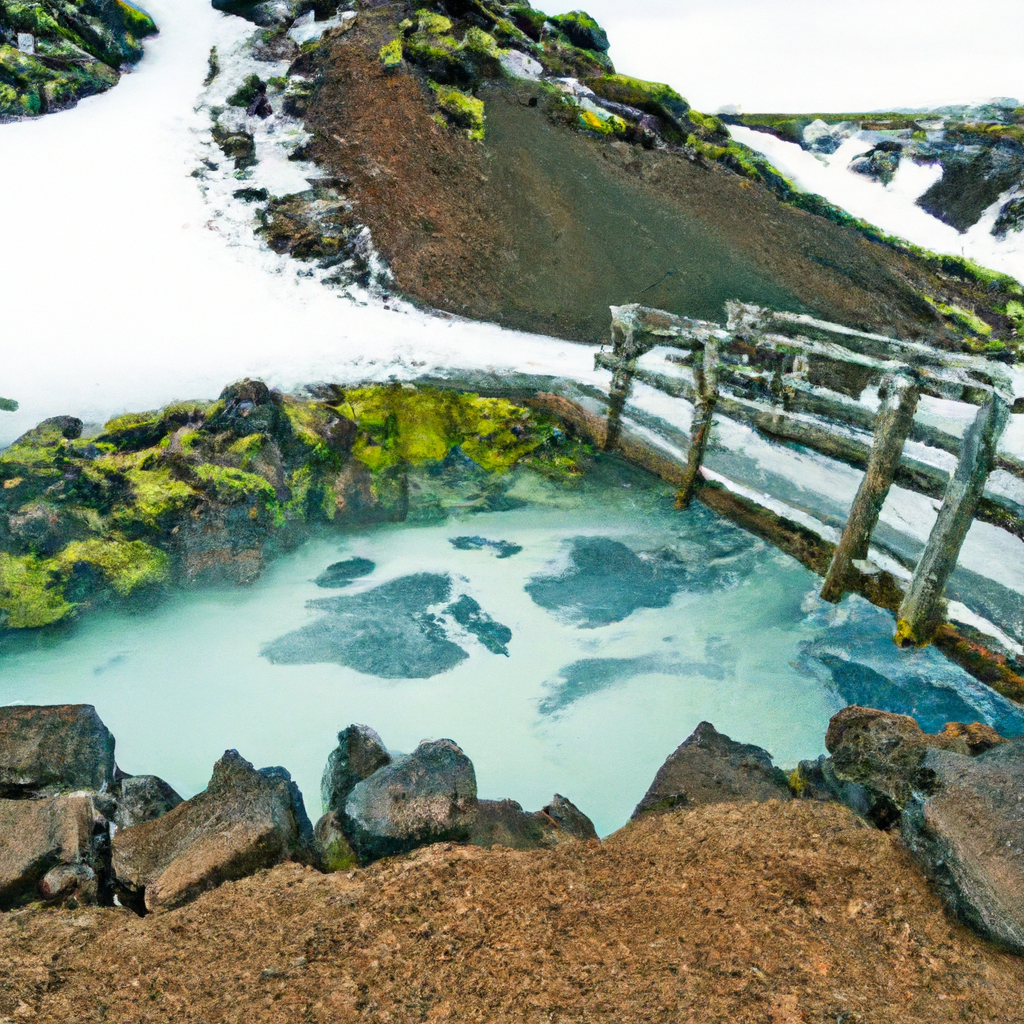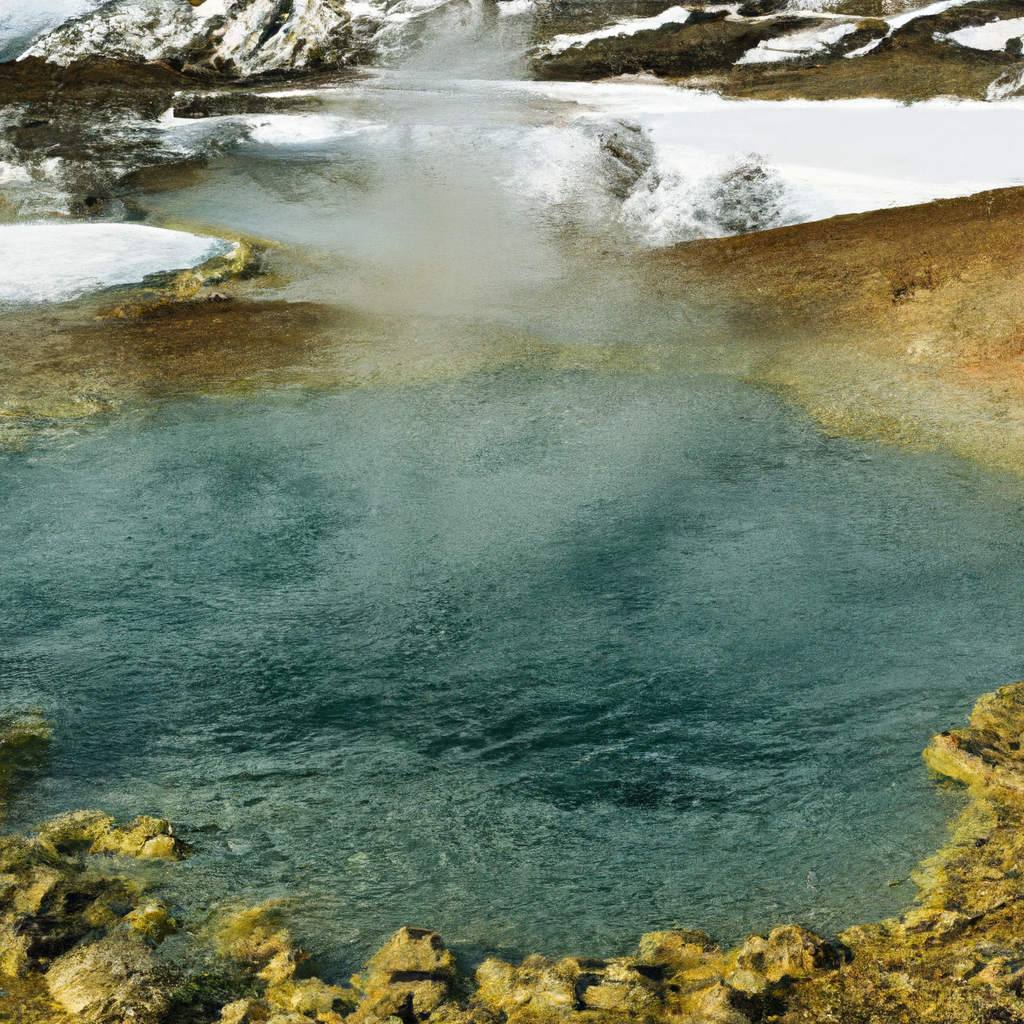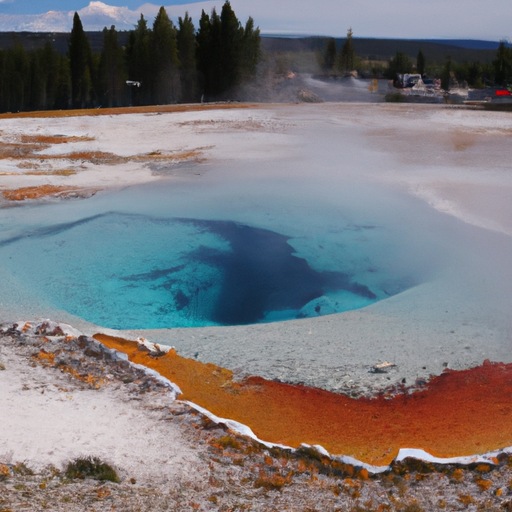Get ready to be transported to some of the most breathtaking natural wonders as we embark on a journey to compare hot springs from around the world with those in the United States. In this captivating article, we̵7;ll explore the unique characteristics, geological formations, and cultural significance of these soothing and therapeutic natural pools. From the iconic geothermal wonders of Iceland to the hidden gems nestled in the heart of the American West, join us as we uncover the magic that hot springs hold across different corners of the globe. So pack your bags and prepare for an adventure filled with wonder and relaxation!

Geographical and Cultural Differences
Location of Hot Springs
Hot springs can be found in various locations around the world, each with its own unique characteristics. Some hot springs are situated in mountainous regions, while others are nestled in valleys or near coastlines. The availability and accessibility of hot springs are influenced by their geographic location.
Topography and Landscape
Hot springs are often found in areas with diverse topography and landscape. Mountainous regions, with their steep slopes and deep valleys, are known to house numerous hot springs. In contrast, plains and coastal areas may have different types of hot springs due to the underlying geological formations.
Climate Variations
The climate of a region plays a significant role in the formation and characteristics of hot springs. Hot springs in colder regions may offer a warm and soothing respite from the harsh winter temperatures. Conversely, hot springs in tropical regions may provide a refreshing escape from the heat and humidity.
Cultural Significance
Hot springs hold great cultural significance in many societies around the world. For centuries, people have recognized the therapeutic and relaxation benefits of hot springs. In some cultures, hot springs are considered sacred and are used for spiritual and cleansing rituals. The cultural practices and traditions associated with hot springs vary across different countries and regions.
Hot Springs Formation and Types
Geothermal Activity
Hot springs are a result of geothermal activity, which occurs when heat from the Earth’s interior is transferred to the surface. This heat is generated by the natural decay of radioactive materials within the Earth’s core. Geothermal activity can be found in areas where there is volcanic or tectonic activity.
Volcanic Hot Springs
Volcanic hot springs are commonly found in regions with active or dormant volcanoes. These hot springs are formed when groundwater seeps into the Earth’s crust and comes into contact with heated rocks or magma. The water is then forced back to the surface through cracks and fissures, creating hot springs with high temperatures and mineral-rich content.
Non-Volcanic Hot Springs
Non-volcanic hot springs, also known as geothermal springs, are formed by different geological processes. These hot springs are usually found in areas with high geothermal gradients, where the temperature of the rocks and groundwater rises significantly. The heat from deep within the Earth’s crust heats the water, creating non-volcanic hot springs.
Mineral Content
The mineral content of hot springs varies depending on their location and geological characteristics. Hot springs often contain a range of minerals, such as calcium, magnesium, sulfur, and silica. These minerals are believed to have various health benefits and are used in traditional medicine and wellness practices.
Accessibility and Infrastructure
Proximity to Urban Areas
The proximity of hot springs to urban areas greatly impacts their accessibility and popularity. Hot springs located close to cities or tourist destinations tend to have better infrastructure and transportation connections, making them more easily accessible to visitors.
Transportation Facilities
The availability of transportation facilities is crucial for tourists visiting hot springs. Areas with well-developed transportation networks, including airports, highways, and public transportation systems, make it easier for visitors to reach hot spring destinations.
Hotels and Accommodation
Hot springs that have established tourism infrastructures often offer a range of accommodations, including hotels, resorts, and guesthouses. These accommodations cater to the varying preferences and budgets of visitors, ensuring a comfortable stay during their hot spring experience.
Facilities for Tourists
In addition to accommodations, hot spring destinations often provide various facilities to enhance the overall tourist experience. These may include spa and wellness centers, restaurants, souvenir shops, and recreational activities such as hiking trails and water sports.
Temperature and Flow Rate
Temperature Range
Hot springs exhibit a wide range of temperatures, with some being lukewarm while others can reach scalding temperatures. The temperature range is determined by the heat source, the depth of the hot spring, and the geothermal activity in the area.
Consistency of Temperature
While some hot springs maintain a relatively consistent temperature throughout the year, others may have seasonal variations. Factors such as weather conditions, incoming groundwater, and geological activity can influence the consistency of temperature in hot springs.
Flow Rate
The flow rate of hot springs refers to the volume of water discharged from the hot spring per unit of time. Some hot springs have a constant and steady flow rate, while others may have intermittent or pulsating flows. The flow rate can affect the overall experience, as higher flow rates can provide a more immersive and dynamic hot spring experience.
Variations in Temperature and Flow
Certain hot springs may exhibit variations in temperature and flow due to natural fluctuations in geological activity or changes in the surrounding environment. These variations can occur over short periods or even across seasons, providing a dynamic and ever-changing hot spring experience for visitors.

Health Benefits and Therapeutic Uses
Historical Significance
Hot springs have been revered for their therapeutic properties since ancient times. Many ancient civilizations recognized the healing benefits of hot springs and used them for medicinal purposes. The historical significance of hot springs in various cultures continues to influence their popularity as wellness destinations today.
Cultural and Traditional Medicine
In many cultures, hot springs are integral to traditional medicine practices. The mineral-rich water and natural heat sources are believed to have healing properties for various ailments, including skin conditions, respiratory disorders, and musculoskeletal problems. Hot springs often play a vital role in traditional healing rituals and therapies.
Mineral Contents and Benefits
Hot springs are known to contain a diverse array of minerals, each with its own specific benefits for the body. The mineral-rich water of hot springs is believed to have properties that promote relaxation, improve blood circulation, alleviate stress, and rejuvenate the skin.
Wellness and Spa Tourism
Hot springs have become popular destinations for wellness and spa tourism. Many hot spring resorts and facilities offer a range of spa treatments, such as mineral baths, mud wraps, and hydrotherapy. These wellness therapies aim to promote physical and mental well-being, providing a holistic healing experience for visitors.
Ecological Impact and Conservation Efforts
Environmental Sustainability
The ecological impact of hot springs can be significant, particularly if they are not properly managed. Ensuring the sustainability of hot springs requires careful monitoring of water usage, waste management, and protection of surrounding ecosystems. Many hot spring destinations are implementing sustainable practices to minimize their environmental footprint.
Protection of Natural Aquifers
Hot springs rely on natural aquifers, underground water sources that feed the spring. It is crucial to protect the integrity of these aquifers to maintain the flow and quality of the hot springs. Measures such as water conservation, responsible development, and monitoring of water sources help safeguard the natural aquifers.
Impact on Local Flora and Fauna
Hot springs often provide unique habitats for a variety of plant and animal species. It is essential to understand and mitigate the impact of human activities on these ecosystems to preserve the biodiversity around hot springs. Responsible tourism practices and conservation efforts play a vital role in minimizing the disruption to local flora and fauna.
Education and Awareness
Creating awareness about the ecological importance of hot springs is essential for their long-term conservation. Education initiatives, guided tours, and interpretive displays can help visitors understand the ecological significance of hot springs and encourage responsible behavior to protect these delicate ecosystems.
Famous Hot Springs Around the World
Pamukkale, Turkey
Pamukkale, located in southwestern Turkey, is renowned for its unique terraces formed by the flow of mineral-rich hot spring water. The white mineral deposits give the terraces a surreal appearance, resembling cotton or snow, hence the name “Pamukkale,” which translates to “Cotton Castle.”
Blue Lagoon, Iceland
The Blue Lagoon in Iceland is a popular geothermal spa known for its milky blue waters and natural hot spring pools. It is located in a lava field and is surrounded by stunning volcanic landscapes. The Blue Lagoon offers visitors a relaxing and rejuvenating experience in a truly surreal setting.
Kusatsu Onsen, Japan
Kusatsu Onsen, located in Gunma Prefecture, Japan, is one of the country’s most famous hot spring resorts. It is known for its high-quality hot spring water, which is believed to have healing properties for various ailments. The town of Kusatsu Onsen also offers a glimpse into Japanese culture and traditional architecture.
Cascate del Mulino, Italy
Cascate del Mulino, located in Saturnia, Italy, is known for its natural hot spring waterfall and thermal baths. The mineral-rich waters of the Cascate del Mulino are believed to have beneficial effects on the skin. The surrounding Tuscan countryside adds to the picturesque beauty of this hot spring destination.
Renowned U.S. Hot Springs
Hot Springs National Park, Arkansas
Hot Springs National Park, located in Arkansas, is home to numerous hot springs that have been protected and preserved for over a century. The park offers visitors the opportunity to soak in the therapeutic waters and explore the historic bathhouses that were popular during the 19th and early 20th centuries.
Yellowstone National Park, Wyoming
Yellowstone National Park, situated in Wyoming, is known for its geothermal features, including the iconic Old Faithful geyser. The park has several hot springs with vibrant colors and unique formations, attracting millions of visitors each year. The geothermal activity in Yellowstone showcases the dynamic nature of hot springs.
Glenwood Springs, Colorado
Glenwood Springs, located in Colorado, is famous for its hot springs and has been a popular tourist destination since the late 19th century. Along with its natural hot springs, Glenwood Springs offers a range of recreational activities, such as hiking, skiing, and whitewater rafting, making it an all-season destination for outdoor enthusiasts.
Calistoga, California
Calistoga, nestled in Napa Valley, California, is known for its geothermal hot springs. It offers a unique combination of hot spring experiences, from natural mineral pools to luxurious spa resorts. Calistoga’s hot springs are often associated with the region’s renowned vineyards, making it a popular destination for wine enthusiasts as well.
Hot Springs as Tourist Destinations
International Hot Springs Tourism
Hot springs have become increasingly popular as tourist destinations worldwide. International hot springs tourism offers visitors the chance to explore diverse cultures, soak in soothing thermal waters, and experience the healing properties of mineral-rich springs. From tropical paradises to snowy mountains, there is a hot spring destination to cater to every traveler’s preferences.
Domestic Hot Springs Tourism
Within the United States, domestic hot springs tourism is a thriving industry. Many regions across the country have established hot springs resorts and destinations that attract visitors seeking relaxation, wellness, and a connection with nature. Domestic travelers can conveniently access a wide range of hot springs, from remote natural springs to luxurious spa resorts.
Attracting Visitors
Hot springs attract visitors with their unique offerings, including the opportunity for relaxation, rejuvenation, and exploration. Visitors are enticed by the allure of therapeutic waters, picturesque landscapes, and the chance to experience different cultural practices and traditions. The tranquil and serene ambiance of hot springs serves as a natural draw for those seeking a break from the hustle and bustle of everyday life.
Economic Impact
Hot springs tourism has a significant economic impact on both international and domestic levels. Hot spring destinations stimulate local economies by generating revenue through tourism-related activities, such as accommodation, food and beverage services, transportation, and souvenir sales. Additionally, hot springs often support job creation, helping boost employment opportunities in the tourism industry.
Current Research and Future Perspectives
Geothermal Energy Extraction
Besides their recreational and therapeutic uses, hot springs also hold potential for geothermal energy extraction. Ongoing research focuses on harnessing the heat from hot springs to produce renewable energy. Geothermal power plants can utilize the heat from hot springs to generate electricity while also utilizing the hot water for various heating purposes.
Advancements in Balneology
Balneology, the study of therapeutic properties of mineral-rich waters, continues to evolve. Researchers are exploring the therapeutic effects of specific minerals found in hot springs and their potential applications in wellness and medical treatments. Advancements in balneology may lead to more targeted and effective use of hot springs in therapeutic practices.
Climate Change Impact
Climate change poses potential challenges to hot springs worldwide. Rising temperatures, altered precipitation patterns, and changing hydrological cycles can potentially impact the stability and availability of hot springs. Studies are underway to assess the vulnerability of hot springs to climate change and develop strategies to mitigate its adverse effects.
Preservation and Restoration Efforts
Preservation and restoration efforts play a crucial role in maintaining the integrity of hot springs. Government agencies, environmental organizations, and local communities are working together to protect hot spring ecosystems, promote sustainable practices, and restore damaged areas. These efforts aim to ensure that future generations can continue to enjoy the benefits and beauty of hot springs.
In conclusion, hot springs around the world and in the United States offer unique geographical, cultural, and recreational experiences. The formation, accessibility, temperature, and health benefits of hot springs vary, attracting visitors seeking relaxation, wellness, and cultural immersion. It is essential to balance tourism development with ecological sustainability and conservation efforts to preserve these natural wonders for future generations. Ongoing research and advancements in various fields, such as geothermal energy extraction and balneology, will continue to shape the future of hot springs and enhance their therapeutic and economic potential.
